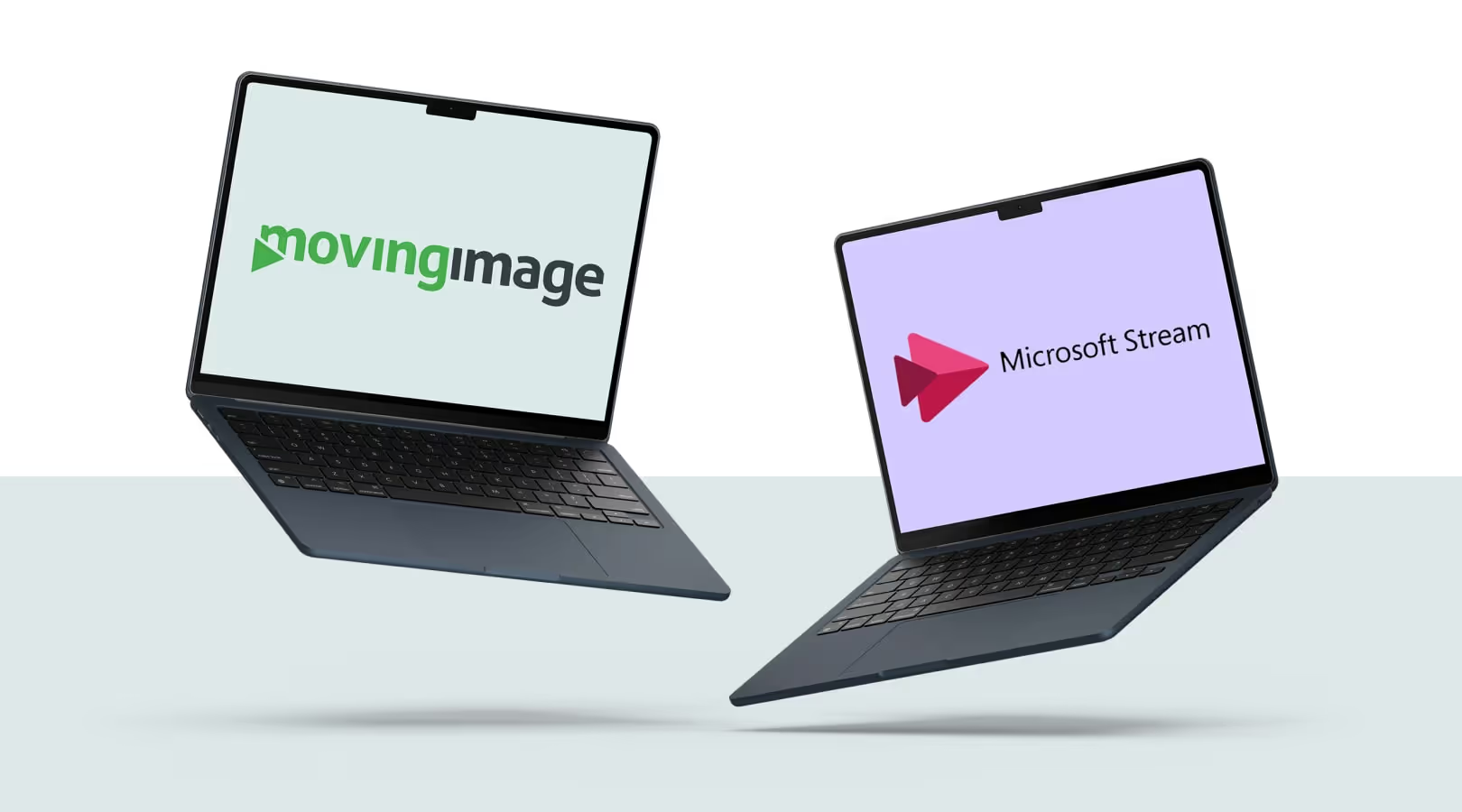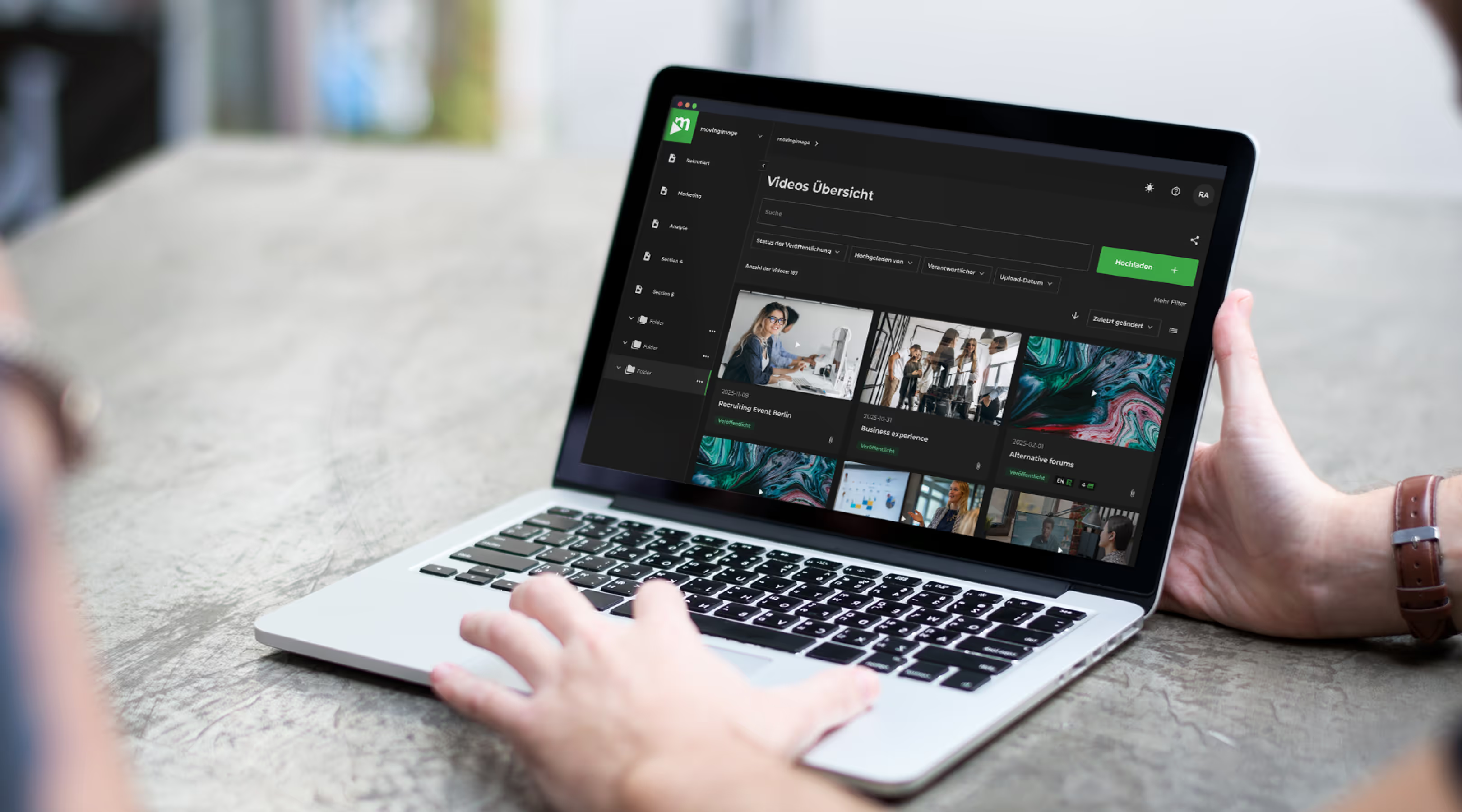Professional livestreaming made easy: how to master live communication
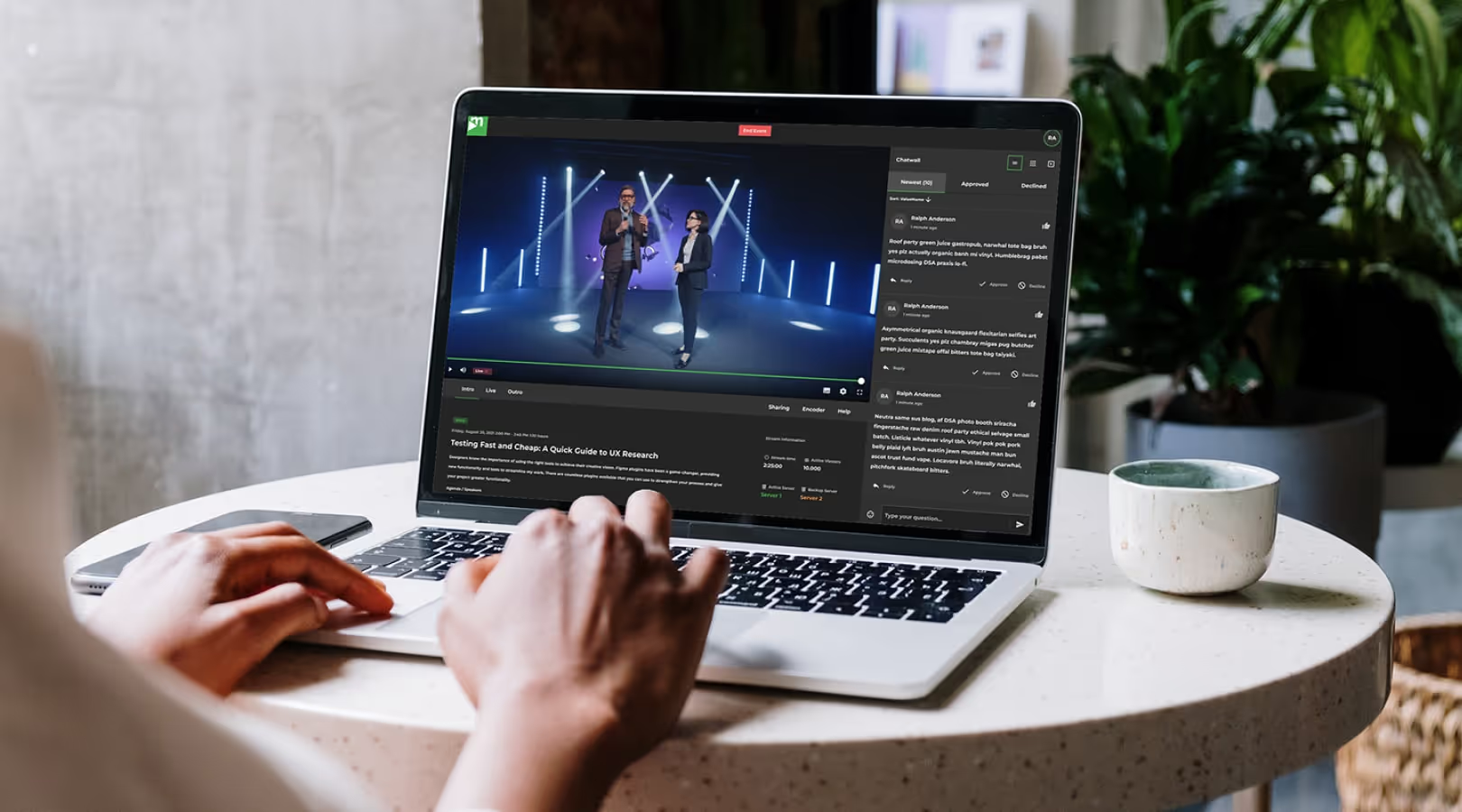
Driving your success with video

Professional livestreaming made easy: how to master live communication
Live communication is more than a trend; it’s a critical success factor for organizations that want to build closeness and trust. Whether for internal updates, product launches, or virtual events, a professional live stream brings people together, conveys messages authentically, and delivers instant impact.
Yet many leaders face the same question: how can we run a live stream in a corporate setting that’s high-quality, secure, and easy to manage? The good news: with modern, cloud-based solutions, getting started with professional livestreaming requires no technical background. In this article, you’ll learn what really matters—and how to use live formats to take your communications to the next level.
Why livestreaming has become a communication standard
Communication has changed—from one-way messages to real dialogue. Employees, customers, and stakeholders now expect companies to be visible, approachable, and transparent. Livestreaming meets exactly those expectations: it brings people together in real time, builds trust, and enables spontaneous, authentic interaction.
Whether for internal town halls, virtual press conferences, or global product launches, live formats have become an essential part of modern corporate communication. They offer a reach that physical events can rarely match—and a sense of closeness no pre-recorded video can create.

Organizations now use livestreams strategically:
- For internal communication, to connect leadership and employees directly.
- For external PR and marketing, to share brand messages with credibility and impact.
- For events, to make hybrid or fully digital formats more engaging and alive.
Livestreaming has evolved from a simple broadcasting tool into a strategic communication channel. Companies are using the live format deliberately to create closeness, expand reach, and make messages emotionally tangible.
The key benefits of livestreaming at a glance
- Authenticity: Real-time formats feel genuine and human.
- Reach: Content can be streamed worldwide across multiple channels simultaneously.
- Interactivity: Viewers become active participants through chat, Q&A, and polls.
- Efficiency: No travel, lower costs, and faster execution.
- Sustainability: Digital events reduce CO₂ emissions and resource consumption.
- Measurability: Viewership, watch time, and engagement provide valuable insights.
The result: more engagement, more visibility, and a communication culture that doesn’t just inform—but connects.
The easy way to a professional livestream
Many companies think of tools like Zoom or Microsoft Teams when it comes to streaming events—but these platforms quickly reach their limits. They’re great for meetings, but they’re not built for professional live events.
As soon as design flexibility, viewer experience, accessibility, or security become more important, standard solutions simply aren’t enough.
Why meeting tools aren’t livestreaming platforms

A livestream isn’t a video conference — it’s a communication experience. It needs to be planned, designed, and delivered securely, as an integral part of your brand communication. That’s why specialized solutions exist: to create live experiences in studio quality—secure, scalable, and fully on brand.
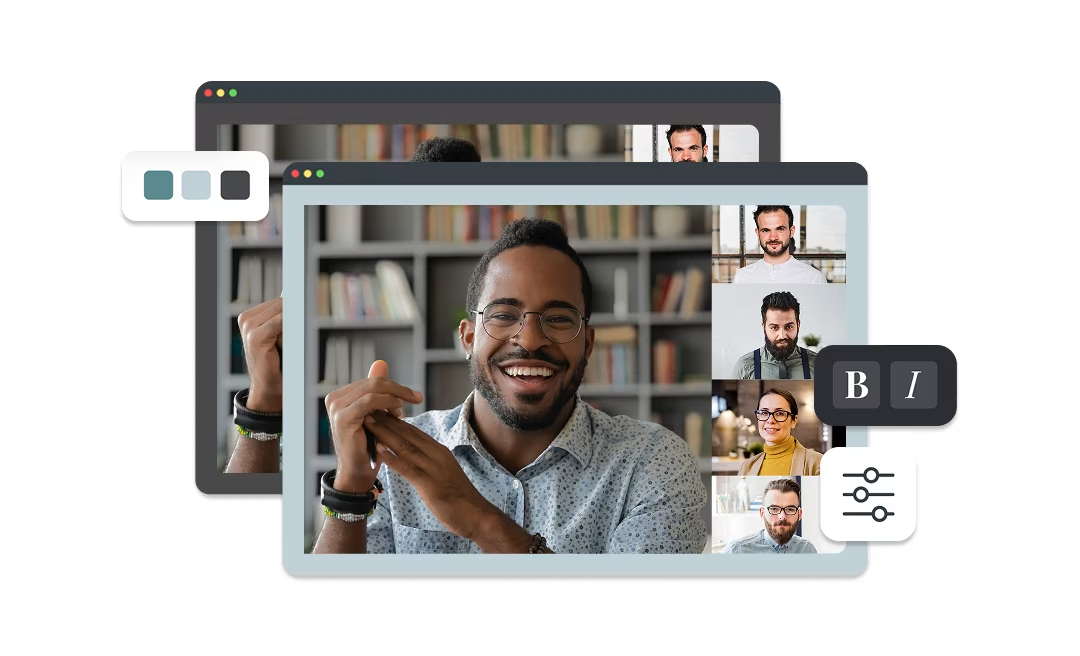
The good news: professional livestreaming is no longer a technical challenge. With modern, cloud-based platforms, you can plan, design, and broadcast an event within minutes—right from your browser, intuitively and without extra equipment. The platform takes care of encoding and signal distribution automatically, with no additional hardware or complex setup required. That means you stay in full control of your live experience—from invitation to post-event analytics.
What makes a professional setup
- Simple setup: Livestreams can be launched within minutes—no technical expertise required.
- Corporate branding: Colors, logos, and layouts fully reflect your brand identity.
- Secure streaming: Password protection, access control, and GDPR-compliant storage ensure data privacy and trust.
- Centralized control: Manage everything from registration and broadcast to analytics—all in one platform.
- Flexibility: From a spontaneous CEO update to a global hybrid event—livestreams adapt to your needs.
What once felt like a technical challenge has become a strategic tool. Livestreaming is now an integral part of modern communication—simple, professional, and sustainably effective.
Inclusive communication: multilingual and accessible
Good communication reaches everyone—regardless of language, location, or ability. Modern livestreaming solutions make that possible: with automatic subtitles, translations, and built-in accessibility features, any live event can become a truly inclusive experience.
For international organizations, this is a real game changer. Content can be subtitled in multiple languages simultaneously, allowing teams around the world to participate at the same time. Even within a company, reach increases when every employee can take part equally.
Accessibility is no longer a “nice-to-have” but a hallmark of modern communication. It promotes participation, diversity, and inclusion—and with the European Accessibility Act taking effect in 2025, it’s becoming a legal requirement for many digital services.
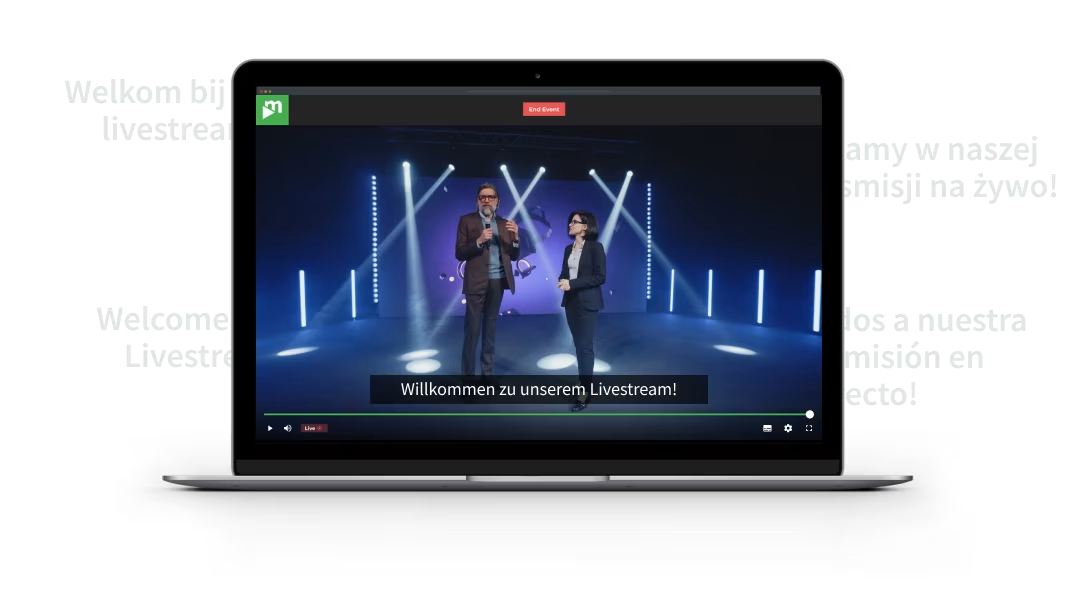
Why accessibility matters in livestreams
- Expand your reach: Multilingual live captions open your events to a global audience.
- Foster inclusion: Accessible content strengthens connection and company culture.
- Ensure legal compliance: Accessibility requirements are met automatically.
- Enhance your brand image: Embracing accessibility shows responsibility and foresight.
- Easy to implement: Modern AI tools enable subtitles and translations with a single click.
This is how live communication moves beyond information—creating real connection across languages and borders.
More engagement through interaction
A livestream thrives on exchange—and on the technology that makes it possible. Modern streaming platforms offer far more than simple transmission: they create spaces for dialogue, feedback, and genuine participation. The best part? Everything can be managed easily, with no control room or IT team required.
Interactive features such as live chats, Q&A sessions, or polls can be activated with just a few clicks. This creates a real sense of involvement—whether 50 or 5,000 people are watching. You remain in control at all times: moderated chats, request-to-speak functions, or customizable interaction settings ensure a professional, secure experience.

Best practices for higher audience engagement
- Ask questions strategically: Start with a poll or quick icebreaker to encourage participation.
- Use live moderation: A clear moderator keeps structure and boosts activity in the chat.
- Make feedback visible: Show reactions or poll results live—transparency builds trust.
- Technology as an enabler: Use platform features to easily combine directing, camera angles, and interaction.
- Follow up after the event: Use interaction analytics to understand engagement and improve future content.
Interactive livestreams are more than a communication tool—they’re an experience that combines connection, participation, and professionalism, showing just how simple modern technology can make genuine engagement.
Conclusion: live made simple – professional, secure, effective
Livestreaming is no longer a privilege reserved for tech experts. Modern tools make it possible to plan, design, and broadcast complex events with just a few clicks—securely, on brand, and in outstanding quality.
What once required production studios and external service providers can now be done directly from the browser. The technology has evolved to the point where you can focus entirely on what truly matters: your message, your audience, your impact.
Whether it’s internal communications, a press conference, or a hybrid event, livestreaming connects people wherever they are—with a level of professionalism that surprises by how simple it has become. And every livestream can be repurposed as a video recording for on-demand communication, social media clips, or internal knowledge sharing.
Those who communicate live today have nothing to fear from technology. With the right platform, effort turns into inspiration—and every stream becomes an experience that lasts.
Our Speakers
Live communication is more than a trend; it’s a critical success factor for organizations that want to build closeness and trust. Whether for internal updates, product launches, or virtual events, a professional live stream brings people together, conveys messages authentically, and delivers instant impact.
Yet many leaders face the same question: how can we run a live stream in a corporate setting that’s high-quality, secure, and easy to manage? The good news: with modern, cloud-based solutions, getting started with professional livestreaming requires no technical background. In this article, you’ll learn what really matters—and how to use live formats to take your communications to the next level.
Why livestreaming has become a communication standard
Communication has changed—from one-way messages to real dialogue. Employees, customers, and stakeholders now expect companies to be visible, approachable, and transparent. Livestreaming meets exactly those expectations: it brings people together in real time, builds trust, and enables spontaneous, authentic interaction.
Whether for internal town halls, virtual press conferences, or global product launches, live formats have become an essential part of modern corporate communication. They offer a reach that physical events can rarely match—and a sense of closeness no pre-recorded video can create.

Organizations now use livestreams strategically:
- For internal communication, to connect leadership and employees directly.
- For external PR and marketing, to share brand messages with credibility and impact.
- For events, to make hybrid or fully digital formats more engaging and alive.
Livestreaming has evolved from a simple broadcasting tool into a strategic communication channel. Companies are using the live format deliberately to create closeness, expand reach, and make messages emotionally tangible.
The key benefits of livestreaming at a glance
- Authenticity: Real-time formats feel genuine and human.
- Reach: Content can be streamed worldwide across multiple channels simultaneously.
- Interactivity: Viewers become active participants through chat, Q&A, and polls.
- Efficiency: No travel, lower costs, and faster execution.
- Sustainability: Digital events reduce CO₂ emissions and resource consumption.
- Measurability: Viewership, watch time, and engagement provide valuable insights.
The result: more engagement, more visibility, and a communication culture that doesn’t just inform—but connects.
The easy way to a professional livestream
Many companies think of tools like Zoom or Microsoft Teams when it comes to streaming events—but these platforms quickly reach their limits. They’re great for meetings, but they’re not built for professional live events.
As soon as design flexibility, viewer experience, accessibility, or security become more important, standard solutions simply aren’t enough.
Why meeting tools aren’t livestreaming platforms

A livestream isn’t a video conference — it’s a communication experience. It needs to be planned, designed, and delivered securely, as an integral part of your brand communication. That’s why specialized solutions exist: to create live experiences in studio quality—secure, scalable, and fully on brand.

The good news: professional livestreaming is no longer a technical challenge. With modern, cloud-based platforms, you can plan, design, and broadcast an event within minutes—right from your browser, intuitively and without extra equipment. The platform takes care of encoding and signal distribution automatically, with no additional hardware or complex setup required. That means you stay in full control of your live experience—from invitation to post-event analytics.
What makes a professional setup
- Simple setup: Livestreams can be launched within minutes—no technical expertise required.
- Corporate branding: Colors, logos, and layouts fully reflect your brand identity.
- Secure streaming: Password protection, access control, and GDPR-compliant storage ensure data privacy and trust.
- Centralized control: Manage everything from registration and broadcast to analytics—all in one platform.
- Flexibility: From a spontaneous CEO update to a global hybrid event—livestreams adapt to your needs.
What once felt like a technical challenge has become a strategic tool. Livestreaming is now an integral part of modern communication—simple, professional, and sustainably effective.
Inclusive communication: multilingual and accessible
Good communication reaches everyone—regardless of language, location, or ability. Modern livestreaming solutions make that possible: with automatic subtitles, translations, and built-in accessibility features, any live event can become a truly inclusive experience.
For international organizations, this is a real game changer. Content can be subtitled in multiple languages simultaneously, allowing teams around the world to participate at the same time. Even within a company, reach increases when every employee can take part equally.
Accessibility is no longer a “nice-to-have” but a hallmark of modern communication. It promotes participation, diversity, and inclusion—and with the European Accessibility Act taking effect in 2025, it’s becoming a legal requirement for many digital services.

Why accessibility matters in livestreams
- Expand your reach: Multilingual live captions open your events to a global audience.
- Foster inclusion: Accessible content strengthens connection and company culture.
- Ensure legal compliance: Accessibility requirements are met automatically.
- Enhance your brand image: Embracing accessibility shows responsibility and foresight.
- Easy to implement: Modern AI tools enable subtitles and translations with a single click.
This is how live communication moves beyond information—creating real connection across languages and borders.
More engagement through interaction
A livestream thrives on exchange—and on the technology that makes it possible. Modern streaming platforms offer far more than simple transmission: they create spaces for dialogue, feedback, and genuine participation. The best part? Everything can be managed easily, with no control room or IT team required.
Interactive features such as live chats, Q&A sessions, or polls can be activated with just a few clicks. This creates a real sense of involvement—whether 50 or 5,000 people are watching. You remain in control at all times: moderated chats, request-to-speak functions, or customizable interaction settings ensure a professional, secure experience.

Best practices for higher audience engagement
- Ask questions strategically: Start with a poll or quick icebreaker to encourage participation.
- Use live moderation: A clear moderator keeps structure and boosts activity in the chat.
- Make feedback visible: Show reactions or poll results live—transparency builds trust.
- Technology as an enabler: Use platform features to easily combine directing, camera angles, and interaction.
- Follow up after the event: Use interaction analytics to understand engagement and improve future content.
Interactive livestreams are more than a communication tool—they’re an experience that combines connection, participation, and professionalism, showing just how simple modern technology can make genuine engagement.
Conclusion: live made simple – professional, secure, effective
Livestreaming is no longer a privilege reserved for tech experts. Modern tools make it possible to plan, design, and broadcast complex events with just a few clicks—securely, on brand, and in outstanding quality.
What once required production studios and external service providers can now be done directly from the browser. The technology has evolved to the point where you can focus entirely on what truly matters: your message, your audience, your impact.
Whether it’s internal communications, a press conference, or a hybrid event, livestreaming connects people wherever they are—with a level of professionalism that surprises by how simple it has become. And every livestream can be repurposed as a video recording for on-demand communication, social media clips, or internal knowledge sharing.
Those who communicate live today have nothing to fear from technology. With the right platform, effort turns into inspiration—and every stream becomes an experience that lasts.



.avif)


.avif)






.avif)

